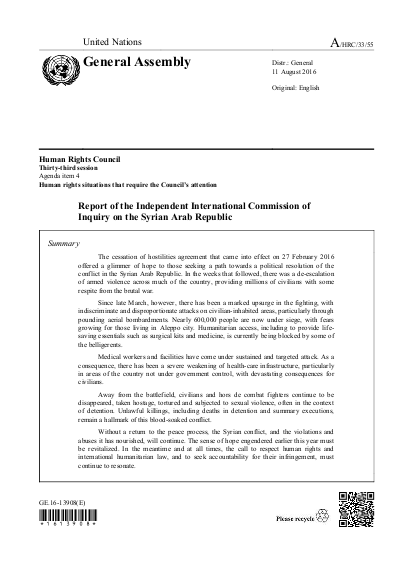
The cessation of hostilities agreement that came into effect on 27 February 2016 offered a glimmer of hope to those seeking a path towards a political resolution of the conflict in the Syrian Arab Republic. In the weeks that followed, there was a de-escalation of armed violence across much of the country, providing millions of civilians with some respite from the brutal war.
Since late March, however, there has been a marked upsurge in the fighting, with indiscriminate and disproportionate attacks on civilian-inhabited areas, particularly through pounding aerial bombardments. Nearly 600,000 people are now under siege, with fears growing for those living in Aleppo city. Humanitarian access, including to provide lifesaving essentials such as surgical kits and medicine, is currently being blocked by some of the belligerents.
Medical workers and facilities have come under sustained and targeted attack. As a consequence, there has been a severe weakening of health-care infrastructure, particularly in areas of the country not under government control, with devastating consequences for civilians.
Away from the battlefield, civilians and hors de combat fighters continue to be disappeared, taken hostage, tortured and subjected to sexual violence, often in the context of detention. Unlawful killings, including deaths in detention and summary executions, remain a hallmark of this blood-soaked conflict.
Without a return to the peace process, the Syrian conflict, and the violations and abuses it has nourished, will continue. The sense of hope engendered earlier this year must be revitalized. In the meantime and at all times, the call to respect human rights and international humanitarian law, and to seek accountability for their infringement, must continue to resonate.